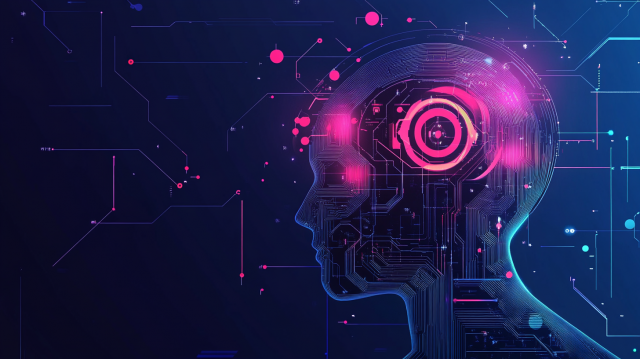
This article provides a detailed explanation of translation APIs, their benefits, and use cases. It also explains the differences between these APIs and generative AI services like ChatGPT.
- Table of Contents
-
- 1. What is a Translation API?
- 2. Advantages of Translation API
- 3. Use Cases
- 4. Differences Between Translation API and Generative AI Service API
- 5. Representative Translation APIs
- 5-1. DeepL API
- 5-2. Google Cloud Translation API
- 5-3. Microsoft Translator Text API
- 5-4. OpenAI API
- 5-5. MTrans API
- 6. Which translation API should you choose?
- 7. About Security
- 8. Summary

1. What is a Translation API?
Translation APIs are technologies that enable automatic translation of text between different languages. By utilizing this API, software developers can add automatic translation features to various services. Translation APIs leverage technologies such as AI, deep learning, and natural language processing, and their accuracy and speed are improving daily. Many translation APIs are offered as cloud-based services and can be accessed from anywhere with an internet connection.
2. Advantages of Translation API
By utilizing translation APIs, companies and developers can quickly deploy multilingual services. This makes it easier to access international markets and expand their customer base. Additionally, translation APIs are more cost-effective compared to human translators and allow for real-time translations, making them effective in situations where immediacy is required. The translation services provided through the API are continuously updated to accommodate new names and terms. Furthermore, by using customization features, it is possible to address industry-specific terminology.
3. Use Cases
Translation APIs are utilized in various fields. For example, in the business environment, they are used to facilitate international transactions and communication. In multinational companies, real-time translation is often required to support communication among team members who speak different languages, and translation APIs meet that need.
Translation APIs are essential in the tourism industry as well. Even when travelers cannot understand the local language, they can easily comprehend restaurant menus and tourist information by using translation apps. Additionally, translation APIs are used on travel websites to translate information about accommodations such as hotels, attractions, and user reviews into various languages.
In the medical field, translation APIs support communication between patients and healthcare professionals, helping to reduce misunderstandings. Especially in emergencies, the need for rapid and accurate information transfer makes the presence of translation APIs extremely important.
4. Differences Between Translation API and Generative AI Service API
There are several differences between translation APIs and generative AI service APIs. Translation APIs are primarily designed to convert text from one language to another. In contrast, generative AI service APIs, such as OpenAI's ChatGPT, support a broader range of natural language processing tasks, including text generation, completion, summarization, and question answering.
Translation APIs are typically specialized for specific language pairs, focusing on translation accuracy and speed. They also come equipped with features specialized for translation, such as a glossary function that allows you to specify translations for specific words and options to choose between casual and formal language.
On the other hand, the API for generative AI services is designed to handle more creative tasks. This includes text generation, story creation, and the development of interactive agents. Generative AI typically has the ability to understand context and generate natural and fluent text. The API for generative AI services is highly customizable, allowing for adjustments tailored to specific industries and applications. This enables users to build solutions that best meet their needs. For more details about the API for generative AI services, please see the blog post below.
What is ChatGPT API? An explanation of its capabilities, benefits, and integration examples!
Overall, translation APIs are specialized in language conversion, while generative AI service APIs differ in that they support a broader range of natural language processing tasks and enable the generation of creative content.
5. Representative Translation APIs
We will introduce representative translation APIs and their features.
DeepL API
DeepL, originating from Germany, is a company known for its high-precision translation service that particularly emphasizes context. By utilizing neural network technology and high-quality training data, it provides a translation service that is more natural and closer to human language. The DeepL API supports 33 representative languages. You can specify translations using a glossary and choose between formal and informal styles for the translated text. In addition to translating text strings, it is also possible to translate entire file documents. Supported file formats include docx/pptx/xlsx/pdf/html/txt/xlf/srt. Both free and paid APIs are available, but since the data entered in the free API may be used to improve DeepL's services, it is necessary to use the paid API for business purposes.
Google Cloud Translation API
Google Translate is a service that quickly provided translation services to the public using neural network technology. The Google Cloud Translation API allows you to use this Google Translate via API. It is relatively literal in translation but has the characteristic of having few omissions, supporting over 100 languages. It includes a glossary feature and document translation capabilities. The file formats supported for document translation are docx/pdf/pptx/xlsx.
Microsoft Translator Text API
Microsoft Translator Text API is a translation API from Microsoft. Similar to Google, it provides relatively literal translations with few omissions. It supports over 100 languages. It features a glossary function and document translation capabilities. The document translation supports file formats such as pdf/csv/html/xlf/markdown/mhtml/xlsx/msg/pptx/docx/odt/odp/ods/rtf/tsv/txt, allowing for the translation of a wider variety of file types than other services.
OpenAI API
The OpenAI API is a generative AI service, but it can also be used as a translation API by using text generation models like GPT-4o and preparing prompts that instruct translation. It supports over 50 languages. In addition to translation, it is also possible to modify expressions according to the purpose of the document or to summarize it. By creatively designing prompts for the OpenAI API, you can provide functionality beyond mere translation. For more details on translation and other applications, please see the article below.
How to Use ChatGPT for Translation – Usage Methods and Practical Procedures
MTrans API
This is the translation API provided by Human Science. By simply connecting to the MTrans API, you can utilize the translation services of DeepL, Google, Microsoft, OpenAI, Amazon, and NAVER Papago. It features a unique glossary function and an automatic post-editing function, allowing you to easily customize translations from each company. The automatic post-editing function enables you to unify expressions by performing string replacements or regular expression replacements on the output of each company's translation API, or to further call the OpenAI API to freely rewrite translations. You can refine translation expressions, unify styles in translation APIs that cannot specify casual or polite forms, and shorten translations to fit character limits.
6. Which translation API should you choose?
Criteria for selecting a translation API include supported languages, translation accuracy, fluency, and API call latency, among others. The general trends are as follows.
・Number of supported languages (more on the left): Google – Microsoft – OpenAI – DeepL
・Translation Accuracy (higher on the left): Google – Microsoft – OpenAI – DeepL
・Fluency (the left is more natural): DeepL – OpenAI – Google – Microsoft
・Call latency (the left is lower/faster): Microsoft – Google – DeepL – OpenAI
7. About Security
When using translation APIs for business purposes, it is necessary to confirm whether the input and output data will be reused for improving the translation service or for developing new services. As mentioned earlier, the free version of DeepL's API service reuses input and output data, which may lead to the leakage of confidential business data outside the company. On the other hand, the input and output data of DeepL's paid API service and those of other companies' translation APIs are not reused.
8. Summary
Translation APIs are technologies that enable automatic translation of text between different languages. They allow for the rapid deployment of multilingual services and facilitate access to international markets. Notable translation APIs are provided by DeepL, Google, and Microsoft, and the OpenAI API for generative AI is also available. Criteria for selection include supported languages, translation accuracy, fluency, and API call latency.
Human Science offers the MTrans API, which utilizes translation engines from DeepL, Google, Microsoft, and OpenAI. It features a glossary function and automatic post-editing capabilities, allowing for easy customization of the output from each company's translation API. We also offer a 14-day free trial of the MTrans API, so please feel free to contact us.
MTrans for Office is an easy-to-use translation software for Office.





























